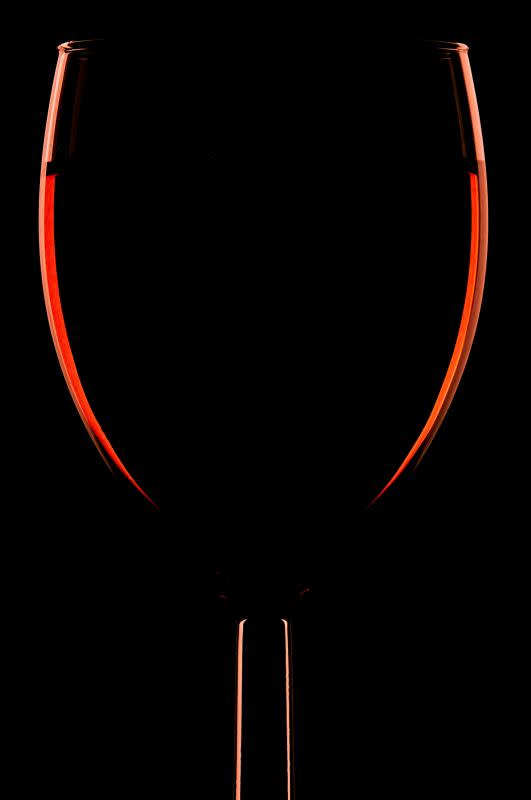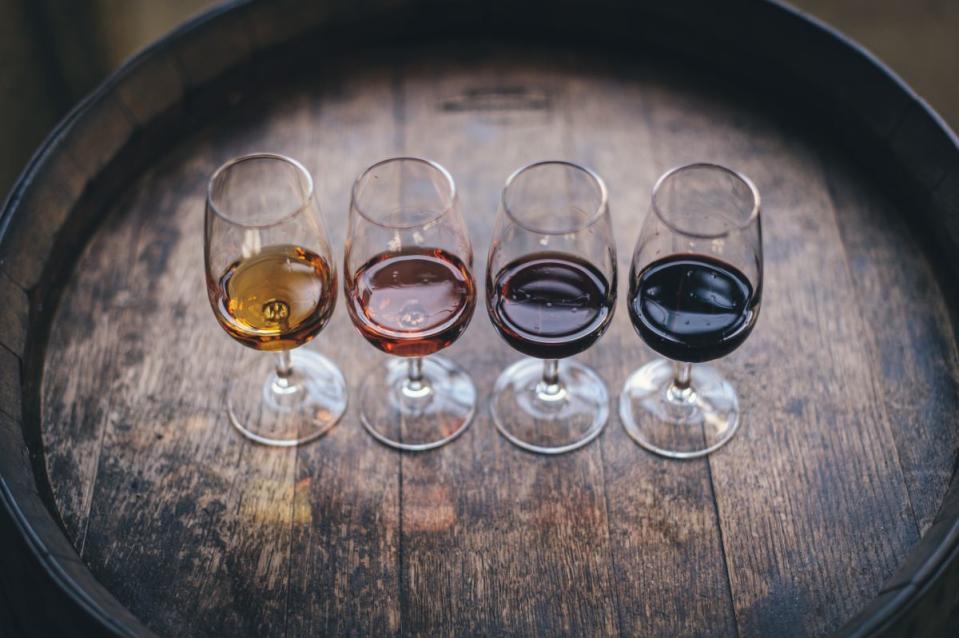Liquid Love Letter: Color

Courtesy of Unsplash | Photo by Edge2Edge Media
Let me start with the obvious: the colors of wine vary widely, from a near-clear white wine, through shades of orange and amber, to pale pink, deep rose, pretty ruby, and garnet with near-purple undertones.
The palette is diverse and intriguing, and it’s also one of wine’s least-discussed features. That isn’t because it’s camouflaged in any way - it’s right there for all to see - but because most of us aren’t in the daily practice of parsing the nuances of “straw yellow” from “wildflower honey” from “dandelion gold.”
So this week, Matthew and I would like to offer a few suggestions in that direction. Because the sight of wine, just like our posts about aroma and texture as other sensory “access points,” helps us to enjoy wine, to know it more intimately, and to add to the conversation and companionship with friends on the other side of the glass.
Visual Anatomy
Let’s start with the visual anatomy of a glass of wine. Of course your first “look” at wine is the stream of it as it pours from the bottle to your glass, and then as it pools in the glass around midway full. There are already things to notice: Is the depth of color what you were expecting, especially if the bottle was opaque and you didn’t already know the color? Does the color strike you as fresh and vibrant or, especially if it’s an older wine, maybe more burnished or rich, like an antiqued patina?
After noting your first impressions, go ahead and pick up the glass (ideally by the stem) and tilt it forward, somewhere around 45 degrees away from you. It’s useful (especially the first few times) to do this with a red wine, because the gradations of color within the glass are usually easier to see. It’s also useful for the background beneath the tipped glass to be white, as in a napkin or tablecloth or even a piece of notebook paper. As you tip the glass, the wine will slide forward and you’ll probably be able to see a difference between the “core” (closer to the bottom of the glass) and the “rim” which is the thin edge of the volume of wine at the top. The color differential between those two locations in the glass tells us some things about the wine. If a red wine “bricks,” for example, or takes on an orange hue, it’s likely an older vintage, which is a useful tip to know if you happen to be tasting wines blind.
For the Sake of Comparison
There’s a reason why “compare and contrast” is one of the oldest educational and pedagogical techniques: noticing what’s the same and what’s different about two things fine-tunes our perception of each thing individually. The same is true for wine. If you can, pour two glasses of wine side-by-side as you explore color this week. If they’re the same grape, all the better: a Malbec from Argentina, for example, and a Malbec from France, or a Grenache from Australia and a Garnacha from Spain. Note that those pairs I just mentioned also set up the dichotomy of Old World (France and Spain) and New World (Argentina and Australia) as well as northern hemisphere and southern hemisphere.
Any (or all) of those data points give you and your co-drinkers things to talk about and explore when it comes to the color of wine. And we’re just at the beginning of the conversation, before we’ve even put our nose into the glass to smell or tipped the glass in the other direction, into our mouths, to taste. The point is, take your time with it, and take each step (in our case, each sense) in turn. There’s a lot there. Dive in! And let us know what you see and taste and enjoy.
Sidebar: As I mentioned above, not many of us are in the daily practice of parsing the nuances of “straw yellow” from “wildflower honey” from “dandelion gold.” But if you’d like to expand your visual vocabulary a bit, and start noticing color all around you in a more nuanced way, I can recommend no better resource than “The Secret Lives of Color” book by Kassia St. Clair. Just for kicks, you can also browse the paint colors page of Farrow & Ball, the exceptional paint and wallpaper company in the UK. It’s a whole other world out there.

Courtesy of Unsplash | Photo by Maksym Kaharlytskyi
Wine is like looking into a kaleidoscope, an explosion of visual information that your brain processes in its own unique way.
One person can look at a red wine in the glass and simply see red.
Another may see the same red wine dive deeper into the optics. They may see the light reflecting, separating red and orange hues. They may look to the outsider layer, or the meniscus of the wine, and see the rings of Saturn-like developments of color.
Within white wine, there are so many complexions. With rosé, many tints. Orange / Amber wine can show varying degrees of depth of color. This is also true of red wine. So what does color say about the wine itself?
It can inform the age of the wine. Intensity of color, especially on the purple to dark red side, can lead you to believe the wine is youthful. A bit of bricking around the outside of the meniscus will show age. If you aren’t familiar with bricking, it’s when a red wine shows a brown or rust-colored transition as it ages. The life cycle of wine shows not just smell and taste development, but color as well!
I recommend picking up a youthful wine, and trying your best to buy some vintage wine on the auction market as well to truly see the differences color-wise. Winebid.com is a great place to bid on vintage wines for sale at a relatively affordable price, and they can ship to most states in the USA.
Here are some wine recommendations I have for the sake of color intensity:
For fresh straw-like white hues try: Domaine de la Pepiere La Pepie Muscadet de Sevre et Maine Sur Lie 2022, or Brokenwood Hunter Valley Semillon 2022
For vibrant rosé colors try: Pasqua 11 Minutes Rosé 2022, Charles Joguet Chinon Rosé 2022, or La Fête du Rosé 2022
For orange ochre try: Tinto Amorío "Monje" 2022, Gérard Bertrand "Orange Gold" 2020, or The Vice Orange of Viognier 2021
For electric reds try: Las Jaras "Sweet Berry Wine" 2019, Gentle Folk "Vin De Sofa" 2022, or Occhipinti "Il Frappato" 2021
For bricking red wine that is blossoming try: Filipa Pato & William Wouter "Territorio Vivo" Baga 2020, or La Spinona Langhe Nebbiolo 2020

